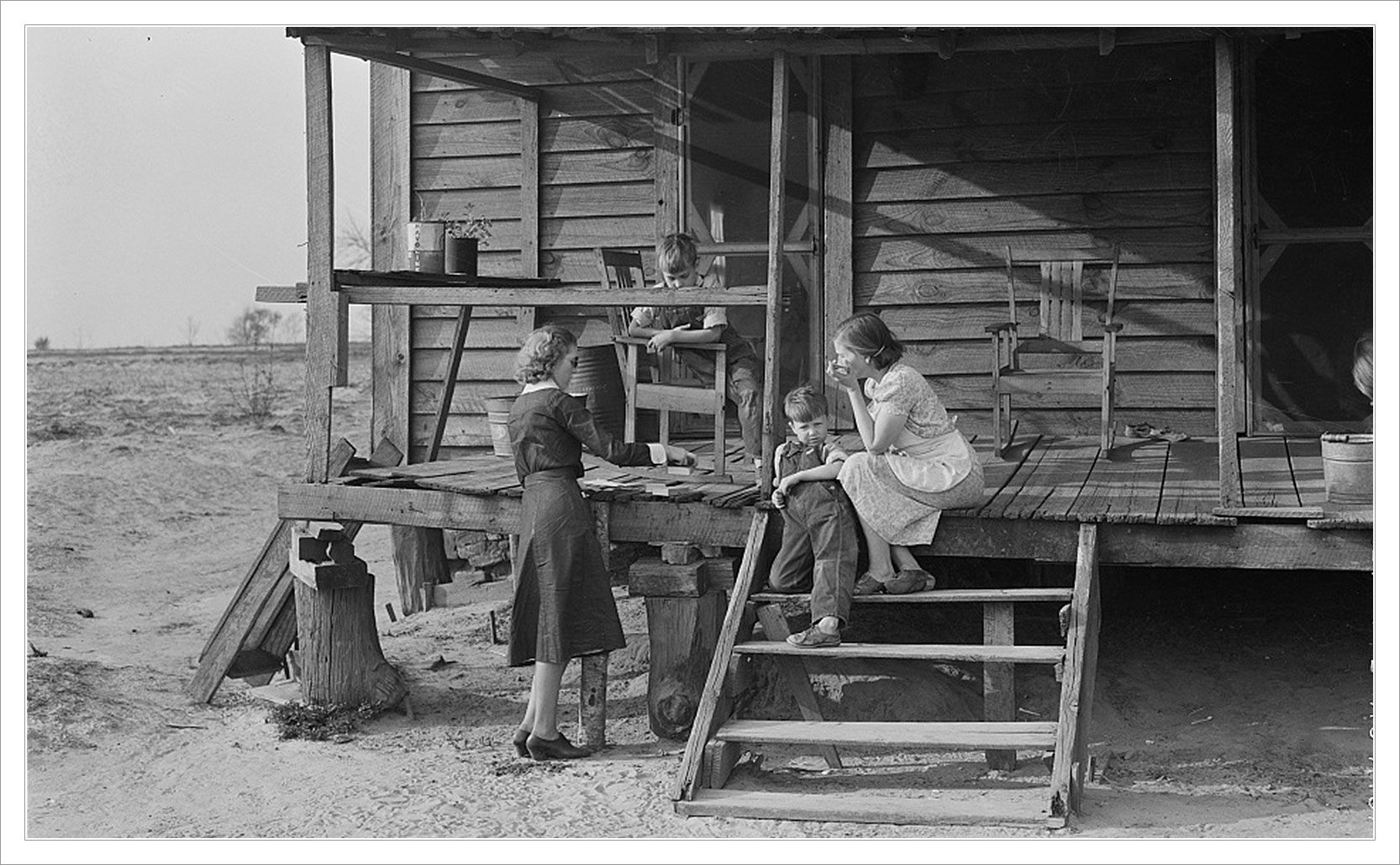Hookworm
The parasite responsible for giving American southerners a bad reputation.
For centuries American southerners were maligned as lazy, slow, shiftless, dumb. Southerners had “the germ of laziness.” There was just something different about southerners that made them less-than their northern counterparts. As it turned out there was something different about them but it had nothing to do with genetics or social conditioning. That something was hookworm.
Hookworm
Hookworm, and specifically the New World hookworm Necator americanus, is a parasitic worm that arrived in America by way of the slave trade in the 17th century. In the larval stage hookworms live in wet warm shady soil where they wait to encounter a human. A person walking barefoot outdoors may make contact with a hookworm at which point it can penetrate the skin and crawl into the foot. From there it travels through the circulatory system to the lungs where it triggers a dry cough. The human host then unknowingly coughs up the worm only to swallow it down to the small intestine, which is where the worm wanted to be the entire time. The worm then lives around 1-2 years (or longer) attached to the wall of the intestine, sucking blood, and where a female worm can lay up to 30,000 eggs per day. Eventually these fertilized eggs are pooped out in a poorly built outhouse or in some bushes, contaminating the soil to start the process again. It’s disgusting.
Because hookworms thrive in warm humid environments they do particularly well in the southern climate of the United States. The area from southeastern Texas to West Virginia became nicknamed the “hookworm belt”. For poor southerners who couldn’t afford shoes and didn’t have indoor plumbing it was almost impossible to avoid hookworm. By 1910 it’s believed that around 40% of the people living in the south were infected with millions of worms.
Putting their gross lifecycle aside, the problem with hookworms is that they steal your blood. Alone one worm won’t do much damage, but getting infested by multiple worms on a continual basis over years/decades has a severely damaging cumulative effect. By consuming your blood hookworms can cause an iron deficiency. People with hookworms become tired, lose weight, and have little strength to do anything. Pregnant women are at risk for anemia and a greater chance of dying in child birth. Infected children can suffer irreversible developmental problems including stunted growth and intellectual disabilities. All of this matches the unfair characterization of southerners as slow rednecks.


The cumulative effect
In 1902 zoologist Charles W. Stiles discovered that hookworms were endemic to the southern US. In 1909 John D. Rockefeller got involved by funding the creation of the Rockefeller Sanitary Commission for the Eradication of Hookworm Disease. They campaigned across the south to educate, test, and help treat hookworm. Students in small country schoolhouses would submit stool samples to their teachers to be tested – some schools even required students be screened for hookworm. People would go to health clinics on the weekends to learn more. An estimated 7.5 million southerners had hookworms. While the Rockefeller Commission helped treat the problem what greatly reduced hookworm was the urbanization of the south enabling more people to afford shoes and sanitary indoor plumbing.

Beyond the health consequences the socioeconomic impact of hookworm is also destructive. The US regions with hookworm had lower rates of literacy and school attendance than areas without it. A 1926 study of Alabama children showed that the more worms a child had the lower their IQ. Even today children with chronic hookworm face up to 40% lower future wage earnings when they grow up. General productivity is measurably lower as a result of hookworm. The southern regions that were worst infected with hookworms saw the greatest income expansion after treatment, but unfortunately centuries of infection had a cumulative effect. Eight of the ten poorest US states are still southern states.
Hookworm in the US is typically thought of as a problem of the past but it is still very much a problem of the present. Given the severe income inequality in the US, hookworm is thriving in regions living below the poverty line. Hookworm lives in, and reinforces, poverty and while 85% of the world lives on less than $30 a day 10% of the world is currently living in extreme poverty. Around the world an estimated 477 million people are currently living with hookworms inside them.


